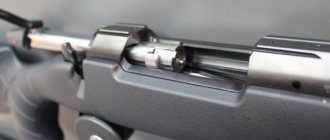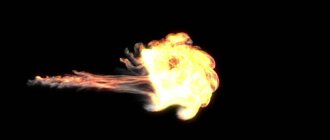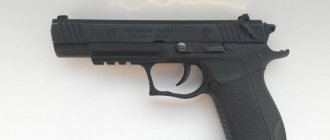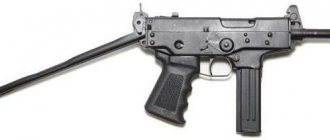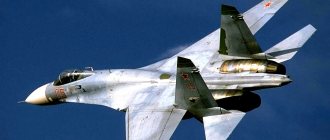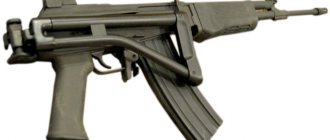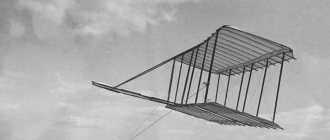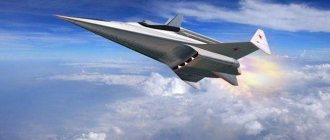In Israel they realized which plane is better - F-35, F-22 or Russian Su-57
The news that Israel is actually twisting the arms of the United States, demanding heavy F-22 Raptor fighters for its air force, shocked the Western expert community. Formally, Tel Aviv explained the urgent request for the supply of fifth-generation aircraft that had long been discontinued by its agreement to America's sale to the United Arab Emirates of a batch of lightweight F-35 Lightning II stealth aircraft. They say this upsets the balance of power in the region.
However, shares of Lockheed Martin (the F-35 manufacturer), instead of rising in price due to the new sales market, immediately collapsed by 3.2% on this news - to $350. But just recently, the shares of the Pentagon's leading defense contractor cost $430.
According to the Israeli newspaper Haaretz, the leadership of the IDF (Israel Defense Forces) openly called the F-22 Raptor a fighter with more combat capabilities than the F-35. That is why “in recent meetings between Israeli and American military officials, Israeli representatives raised the possibility of purchasing the F-22,” Haaretz writes. “...Our qualitative advantage is narrowing...This is not the same Middle East as it was in the last decade.”
At first, numerous Western experts said “no, this is impossible.” First, the F-22 Raptor has been out of production since 2011. Secondly, there are only 177 of them in the US Air Force, and the Pentagon prays for each vehicle. And third, its sale to foreign countries is prohibited by federal law due to fears that advanced technology will leak into hostile countries.
Who will win in a dogfight?
Not a single expert in the world undertakes to accurately name the outcome of the battle in a collision with the F-22. The emphasis in the American aircraft is on maximum stealth. The Raptor is suitable for close-range combat. The Russian fighter, according to the developers, has better maneuverability and an advanced infrared search system. PAKFA is suitable for long-range combat.
Su-57
Thanks to its high maneuverability, the Su-57 can leave the battlefield under uneven conditions. Due to its high stealth capabilities, the F-22 is capable of delivering the first strike before enemy aircraft detect it. It will be possible to fully compare fighters after long-term operation in combat conditions.
The outcome of the battle depends on the conditions of the encounter. If the F-22 can catch a promising Russian development by surprise, it will easily destroy it. Ground and air support plays an important role. It is worth noting that the Americans already have a large number of F-22s (195 units). As of 2022, there are only 10 flight prototypes of the Su-57 in Russia.
Which plane is better?
F-22Su-57
Eurofighter Typhoon vs SU 35
Eurofighter Typhoon (EF2000) is a solid European 4+ generation fighter. Like the Su-35, it does not reach the 5th generation due to its high visibility (ESR = 1m2), but it has already acquired an active phased array (phased array antenna).
By the way, the French Rafale fighter also has an AFAR. It also never fought against the Su-35 in real conditions, but India almost bought it instead of our Su-30MKI. Fortunately, the incident ended in our favor.
The little Eurofighter has grown to 500+ since 2003.
Externally, the Eurofighter is 6 m shorter and 4 m narrower than the Su-35. Differences in dimensions result in differences in mass (11 tons versus 19 tons on the Su-35) and rate of climb (315 m/s versus 280 m/s, respectively). At the same time, their combat load is almost identical: 8 tons for the Su35 versus the Eurofighter with 7.5 tons. The EF-2000 has as many as 13 hardpoints - 1 more than the Su-35. The maximum (Mach 2.25) and cruising (Mach 1.2 - 1.1) speeds of fighters are approximately equal, as is the ceiling height (19.8 versus 20 tons), so missiles fired at supersonic speed will fly with colossal energy .
"Eurofighter" is not particularly interested in invisibility, so it generously hangs missiles under the wings and hull
The target detection range of the Su-35 is slightly higher - 400 km versus 300 km for targets with ESR = 3 m2. The Su-35 also has a missile launch warning system. Both fighters control their engines from all angles, but the Su-35 has the advantage in maneuverability. The combat radius of the EF-2000 with a full load of air-to-air missiles and 1 PTB is 1300 km. The Su-35 in similar conditions covers 1800 km.
Eurofighter can boast of the Meteor missile (range - 100 km) with active radar guidance. Target designation is possible in passive mode - from an IR complex or by a radiation source; it is very difficult to fool it.
National Interest columnist Dave Majumdar and Royal United Services Institute expert Justin Bronk give a positive assessment of the Su-35: it is good at jamming and electronic warfare. “Irbis-E” allows you to intercept high-precision stealth missiles and destroy ballistic missiles both during the march and at the final stages.
They leave the advantage of passive radio reconnaissance to the Typhoon, noting the superiority of the European information dissemination systems MIDS and Link 16. They also give the Typhoon primacy in terms of interaction between the pilot and the aircraft, the convenience of the cockpit and the interface.
The advantage of experience and numbers is on the side of the Western fighter. Since 2003, almost 600 copies of Eurofighters have been produced (for aviation in Europe, Oman and Saudi Arabia). The Su-35 was released in 2014, by mid-2022 only 70 aircraft are available in Russia and another 14 in China.
Comparison of tactical and technical features of aircraft
The Su-35 is considered Russia's most formidable fighter. He made his first flight in 2008. The Russian Air Force added these aircraft to its fleet in 2012. By the end of 2022, the Ministry of Defense will have 50 such aircraft.
This aircraft has excellent technical characteristics and combat capabilities. However, it belongs only to the 4th generation of fighters, which significantly distinguishes it from the more modern American F-22, a fifth-generation fighter. So which one has the upper hand in air combat? Will the “American” be able to withstand the Su-35, what characteristics will allow it to win the battle?
Comparison of two military aircraft: 1. Highest speed in afterburner, non-stop flight distance, maximum altitude.
- Su-35: 2,410 km/h, 3,600,000 m, 20,000 m.
- F-22: 2,410 km/h, 3,220,000 m, 20,000 m.
2. Level of visibility for enemy radars.
- Su-35: Irbis radar, air target detection range - 90,000 m, OLS-35, has an infrared scanning system.
- F-22: APG-77 radar, air target detection range - 150,000 m, no infrared optics, no infrared detection system.
3. Combat equipment.
- Su-35: air-to-air missiles 6+8, combat load - 8 tons, close combat weapons - R 73-M (distance - 20,000 m), long-range weapons - R-27 (110,000 m), K- 77M (190,000 m), R-37 (300,000 m), air cannon - GSh-30-1 30 mm.
- F-22: 6+2 air-to-air missiles, combat load - 3.5 tons, close combat weapon - AIM-9 (18,000 m), long-range weapon - AIM-120 (180,000 m), air cannon - Vulcan M 612 A 20 mm.
From these characteristics it is clear that both military aircraft can fly at supersonic speeds, have modern radar, and can hit targets from any angle. However, the “American” is more likely to detect the enemy. He will see the Su-35 aircraft from 150,000 m, while the Russian fighter will notice the “American” only from a distance of 90,000 m. The F-22 will launch its missile much faster (AIM-120 - 180 km). True, the Su-35 is vulnerable when it does not see its enemy on the radar. With the support of its air defense, it has an advantage over the “American”.
The Russian military aircraft can attack air, sea, and ground targets. The fighter quickly bypasses and flies around any obstacles. Its combat equipment is unparalleled in terms of the number of warheads used in sea, air and ground combat. The external nodes can accommodate 14 missiles. Its warheads are placed on 8 wing hardpoints, as well as under the fuselage and under the engine nacelles.
The F-22 is the most classified aircraft. Perhaps some of its characteristics do not correspond to reality. This is the only aircraft that is not sold to other countries. The US Air Force has 180 of these fighters. They cost $140 million each (Russian ones cost $50 million each).
Detecting a stealthy target is possible, but very, very difficult.
These individual radar transmitting and receiving posts consume quite little electricity and have lower radiation power compared to conventional radars. Thanks to this, they are better protected from anti-radar weapons. PPPs are mobile, which allows them to be quickly deployed to the forward area during a conflict. They are connected to each other and to the central tracking station by ultra-high-frequency data transmission channels. The central station may be located at a considerable distance from the complex. This distributed architecture allows the complex to maintain its functionality even if one PPP is destroyed, although the detection accuracy may decrease. The low height of the receiver and transmitter antennas (only 25 meters above the ground) allows Struna-1 to very effectively detect low-flying targets, which are often difficult to detect with conventional radars.
Also on topic:
Stern: Russian radar decoy for stealth aircraft
Sina: artificial intelligence of the Russian Su-57
The disadvantages of Struna-1 include the low target detection altitude. Due to the use of spaced posts with transmitter and receiver, the detection zone has the shape of a parabola. This limits the maximum detection altitude to seven kilometers, and the maximum detection range decreases as you approach the IFR. The lateral dimensions of the detection zone are also limited, amounting to about one and a half kilometers near the posts and 12 kilometers at the optimal point between two posts. The relatively small size of the detection zone limits the ability to use Struna-1 as a decoy, and it cannot become a full replacement for traditional radars as a search tool. But having high accuracy in tracking stealth aircraft, Struna-1 interacts well with other radar systems of longer wavelengths, such as the Podsolnukh radar, which has a lower tracking accuracy. "Struna-1" cannot act as a target designation radar, since it is not able to provide constant radar exposure and target tracking. Therefore, it cannot be used to guide semi-active surface-to-air missiles.
The Struna-1 bistatic radar is not an ideal means of detecting stealth aircraft, but in future conflicts it could pose a serious threat to NATO aircraft. Attack aircraft with stealth characteristics will be especially vulnerable, since they have a specific flight pattern, forcing them to fly into the coverage area of the Struna-1 radar. Operating in tandem with other stealth radar systems, this station can collect vital information about the location and movements of enemy stealth aircraft.
Charlie Gao studied political science and computer science at Greenell College. He is a frequent commentator on defense and national security issues.
